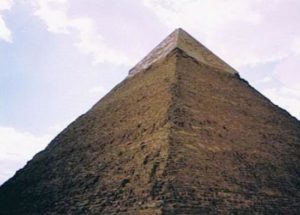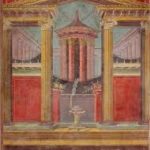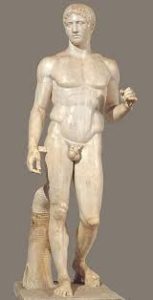Ancient cultures created many works of art over many centuries. Many ancient civilizations used art to illustrate their religions and cultures. By observing their Art we can see how these civilizations lived, who they respected, and the ideals on which their societies are built. All of these important facts, of ancient civilizations, can be seen through many mediums for example: paintings, sculptures, and palettes. Some of the ancient civilizations that I looked at were: Egyptian, Greek, and Roman. Each of these civilizations has their own unique flair in which they depicted their societal values through their art.


The first civilization that we will look at is Egyptian. Egyptian art, shows that their primary focus is on the afterlife and on divine and royal beings. Egypt’s art showcases the worship and praise of the Egyptian gods and kings. This idea can be seen from the work, The Palette of Narmer, which was produced in 3000 BCE. In this work, King Narmer is carved unproportionally large as compared to the other figures in the piece. This fact makes the king almost larger than life. Furthermore, King Narmer is adorned with a large spectacular crown and with a large Sceptre in his hand. To complete his god like depiction he is made to be standing with a royal posture. All these elements make him look truly powerful and godlike. We can see from here how in Egyptian culture the subjects see their kings and queens as gods. Egyptian art allows us to see into Egyptian society and how they built their society on the fact that their royalty is like gods. Other forms of Egyptian art, pyramids, mummies, and death masks to name a few. These art pieces portray the Egyptian society’s obsession with the afterlife. One of the myriad of reasons as to why many pyramids were built was to be a burial place for the Egyptian elites, their gods, their pharaohs and queens. Once again we see how much effort was put into these art pieces so that their gods can be comfortable because of how much they worship their gods. Another interesting tidbit is that much of the surviving Egyptian art comes from inside the tombs and monuments of Egyptian royalty which illustrates Egyptian emphasis on life after death and the preservation of knowledge of the past.
However, when looking at Greek and Roman art we see many similarities. Greek and Roman societies had very different values from those of Egyptian societies and therefore their art is on a different spectrum than Egyptian art. Greek/Roman art focuses on human figures and humanity as a species, this is called, humanism. In other words humanism centers around mankind, rather than gods. This is what separates Egyptian and Greek and Roman art. This can be illustrated by looking at Greek and Roman art. In one of their artforms, sculptures, we see many human figures. Greek humanism portrays the natural world around us. As Austin Cline says “it placed human beings at the center of moral and social concerns ” (“Humanism in Ancient Greece”). This is very different from the ancient Egyptian world, where the art we are looking at is usually different paintings or sculptures of gods and leaders. Rather, This art puts humans in the center, not a spiritual presence. We see this by the many human-like sculptures that were made in the Greek and Roman civilizations. To further the humanist aspect, Greek and Roman art made sculptures look as if they are ‘moving.’ This is a major difference from Egypt’s stillness and stiffness in their sculptures. The movement in the pieces makes the figure seem alive. Another point in their sculptures that made them more realistic was their bodies. The front of the piece shows indents and curves of the stomach, legs, and arms (if there were arms). Greek and Roman cultures are seen in the faces of the sculpture as well as the curly short hair that frames the face. Overall, we see the major difference in ancient cultures by their art pieces.

Although we usually clump Roman and Greek culture together they still have many differences in culture and religion which is seen in their handiwork- specifically in their temples. Greek temples are typically very large. This is so they keep their godly figures and perform rituals inside the temple. Sculptures were usually painted (i.e. like skin tone colored or lipsticked). This differs from Roman culture where the temples were small and rituals were done in front not inside. This is one of the ways in which Roman and Greek art which are usually bunched together in their artwork differ based on religion and culture.
In Summation, we see major differences in ancient art based on what the society believed was important. Egypt put importance in gods and leaders while Greek/Roman went to a more humanistic approach. This, therefore, shows us difference in culture between Egypt and Greek/Rome. Contrastingly, Greek and Roman showed many similarities of commonalities between cultures based on how they portrayed individuals as a symbol of power for the rest of civilization.


